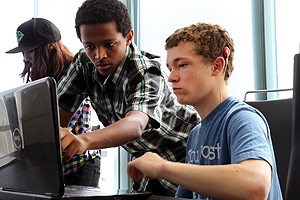AccessComputing Supports Projects Nationwide (AccessComputing News - January 2014)


Led by the Department of Computer Science & Engineering and DO-IT (Disabilities, Opportunities, Internetworking, and Technology) at the University of Washington, AccessComputing is supported by the National Science Foundation (Grant No. CNS-0540615, CNS-0837508, and CNS-1042260). Any opinions, findings, and conclusions or recommendations expressed in this material are those of the authors and do not necessarily reflect the views of the National Science Foundation.
University presidents, chief information officers, and other (IT) leaders discuss the importance of and strategies for making IT accessible campus-wide.
People who design and support websites share how to make web pages accessible to people with disabilities.
Veterans and postsecondary educators share strategies that create welcoming and accessible environments for wounded warriors.
Yes. In addition to the "effective communication" standard, OCR has, in at least one resolution letter, favorably cited a judicial decision (Tyler v. City of Manhattan, 857 F.Supp. 800 (D.Kan.1994)) in which the court ruled that a postsecondary institution violated its obligations under the Americans with Disabilities Act of 1990 (ADA) when it only responded on a case-by-case or ad hoc basis to individual requests for accommodation.
SMIL (Synchronized Multimedia Integration Language, pronounced "smile") is a World Wide Web Consortium (W3C) specification markup language that enables simple authoring of multimedia presentations that integrate streaming audio and video with images, text, or any other media. It accomplishes this by dividing the different media components into separate files and streams and then displaying them together on the user's computer as if they were a single multimedia stream.
The following publication content was developed through a joint project between AccessIT and the ADA and IT Technical Assistance Centers.
In 2002 Blue Ridge Community College, in Flat Rock, North Carolina received funding for a two-year initiative to improve access to information technology in community colleges. The project used student feedback to identify barriers; assess and upgrade existing information technology on campus; and implement faculty-wide trainings on overcoming barriers to information technology experienced by students with disabilities.
Microsoft® Word is the world's most popular word processing software application, and files created with Word (typically ending in .DOC or .DOCX) are common as a means of distributing materials over the web, including materials used in education.